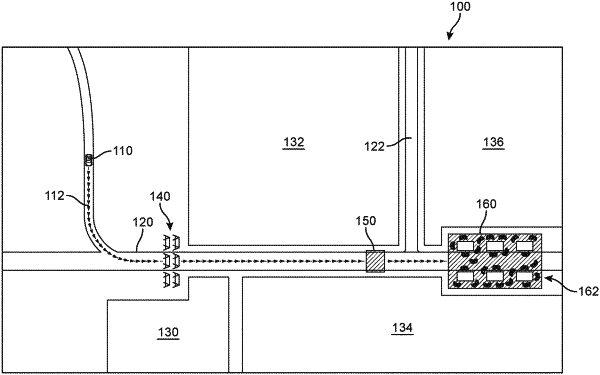| CPC G05D 1/0287 (2013.01) [B60W 60/001 (2020.02); F41H 11/08 (2013.01); B60W 2556/45 (2020.02)] | 20 Claims |

|
1. A method for deploying autonomous vehicles to form a barricade, the method comprising:
determining at least one location for a barricade in response to an imminent threat;
determining a plurality of autonomous vehicles that are available to form the barricade;
determining whether each autonomous vehicle of the plurality of autonomous vehicles is occupied or unoccupied;
upon determining that an autonomous vehicle of the plurality of autonomous vehicles is occupied, excluding the occupied autonomous vehicle for use in forming the barricade;
upon determining that an autonomous vehicle of the plurality of autonomous vehicles is unoccupied, including the unoccupied autonomous vehicle for use in forming the barricade;
sending instructions to one or more of the unoccupied autonomous vehicles of the plurality of autonomous vehicles to form the barricade at the at least one location; and
wherein, in response to the instructions, the one or more of the unoccupied autonomous vehicles of the plurality of autonomous vehicles are configured to move to the at least one location and form the barricade in two rows having an arc shape with the convex portion facing towards an incoming direction of the imminent threat.
|